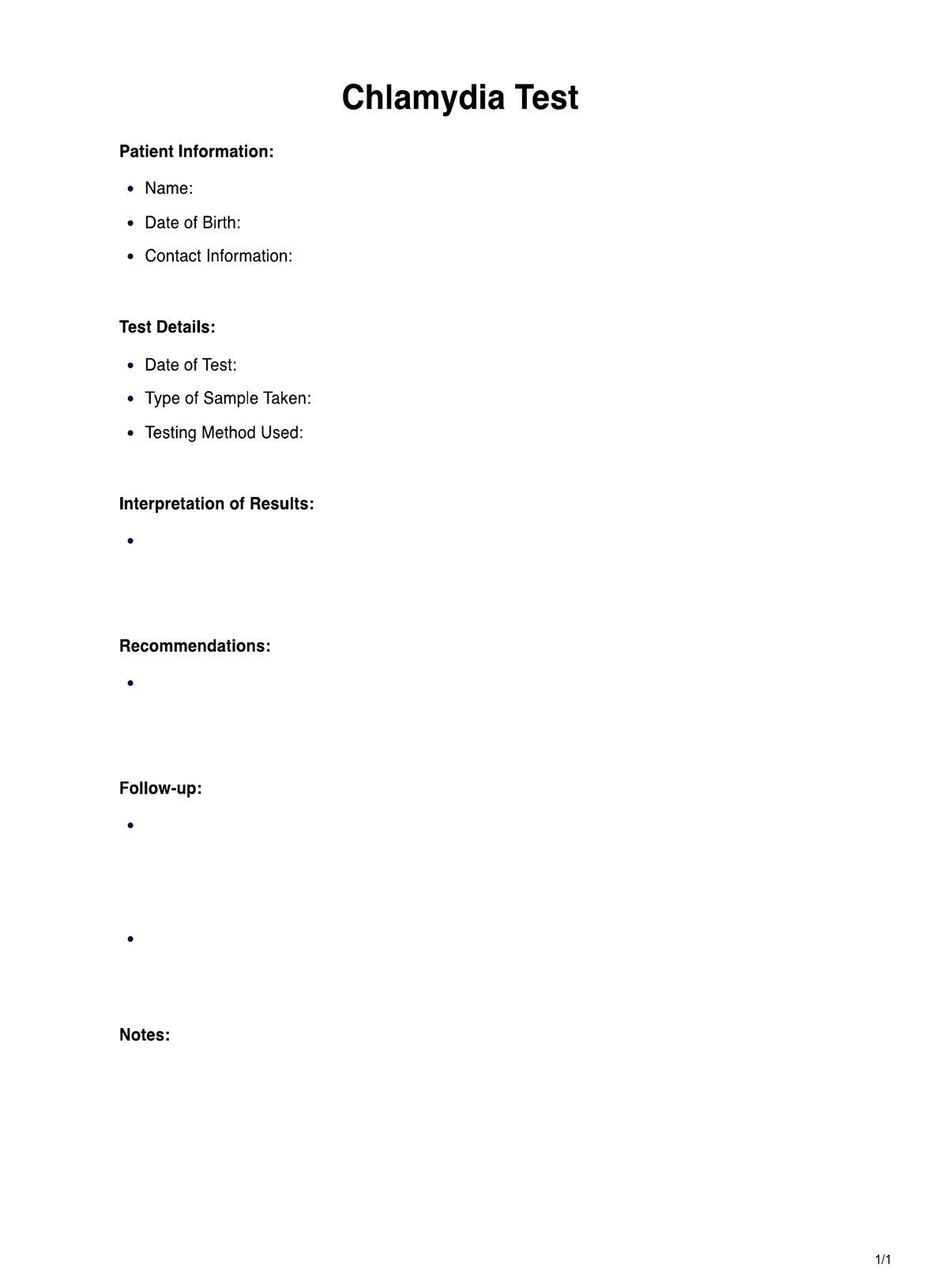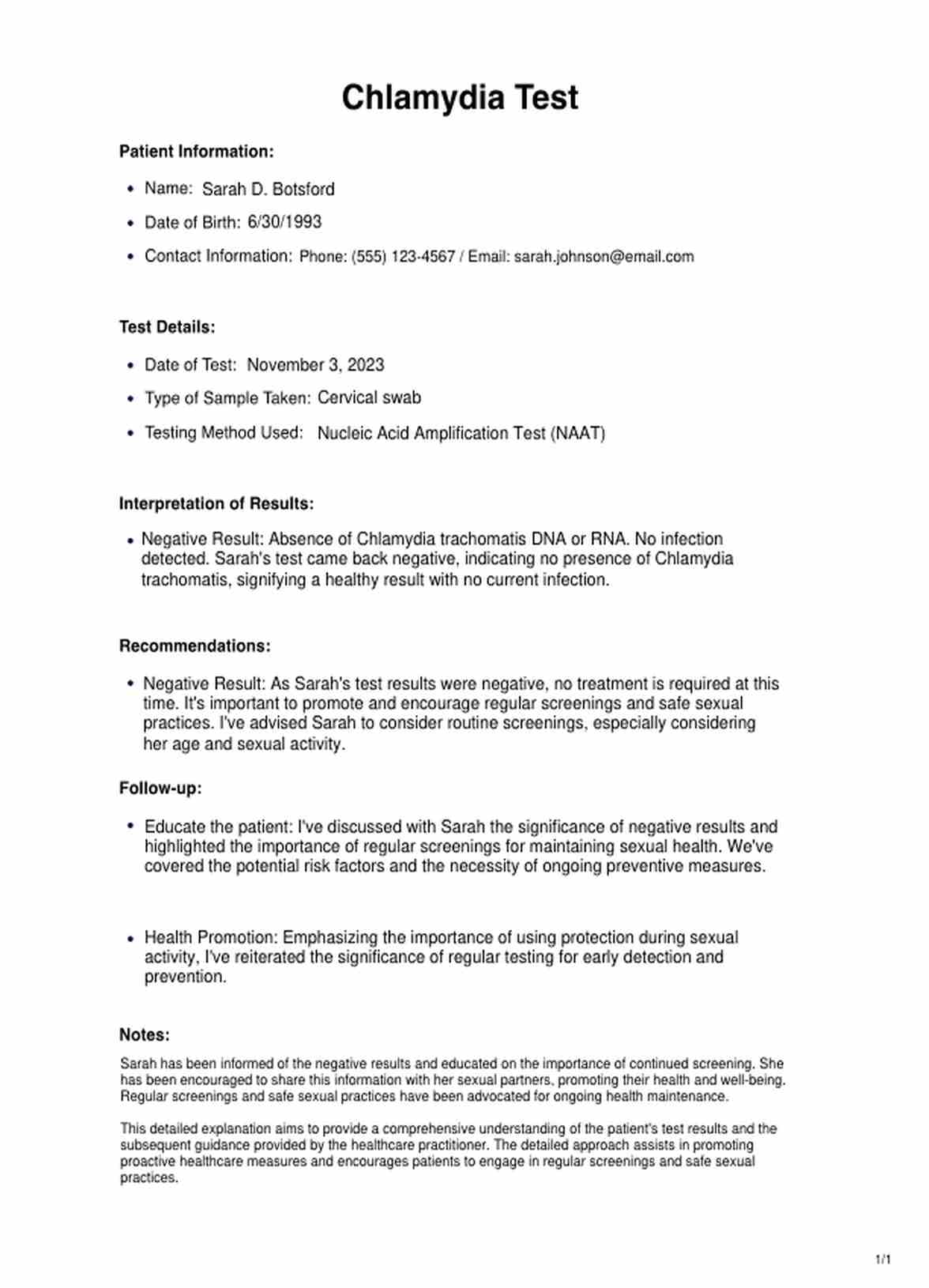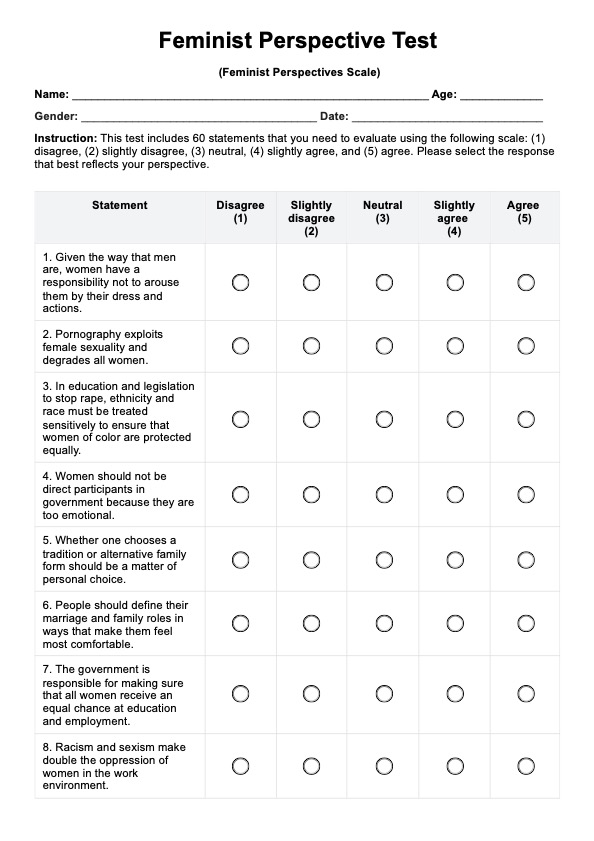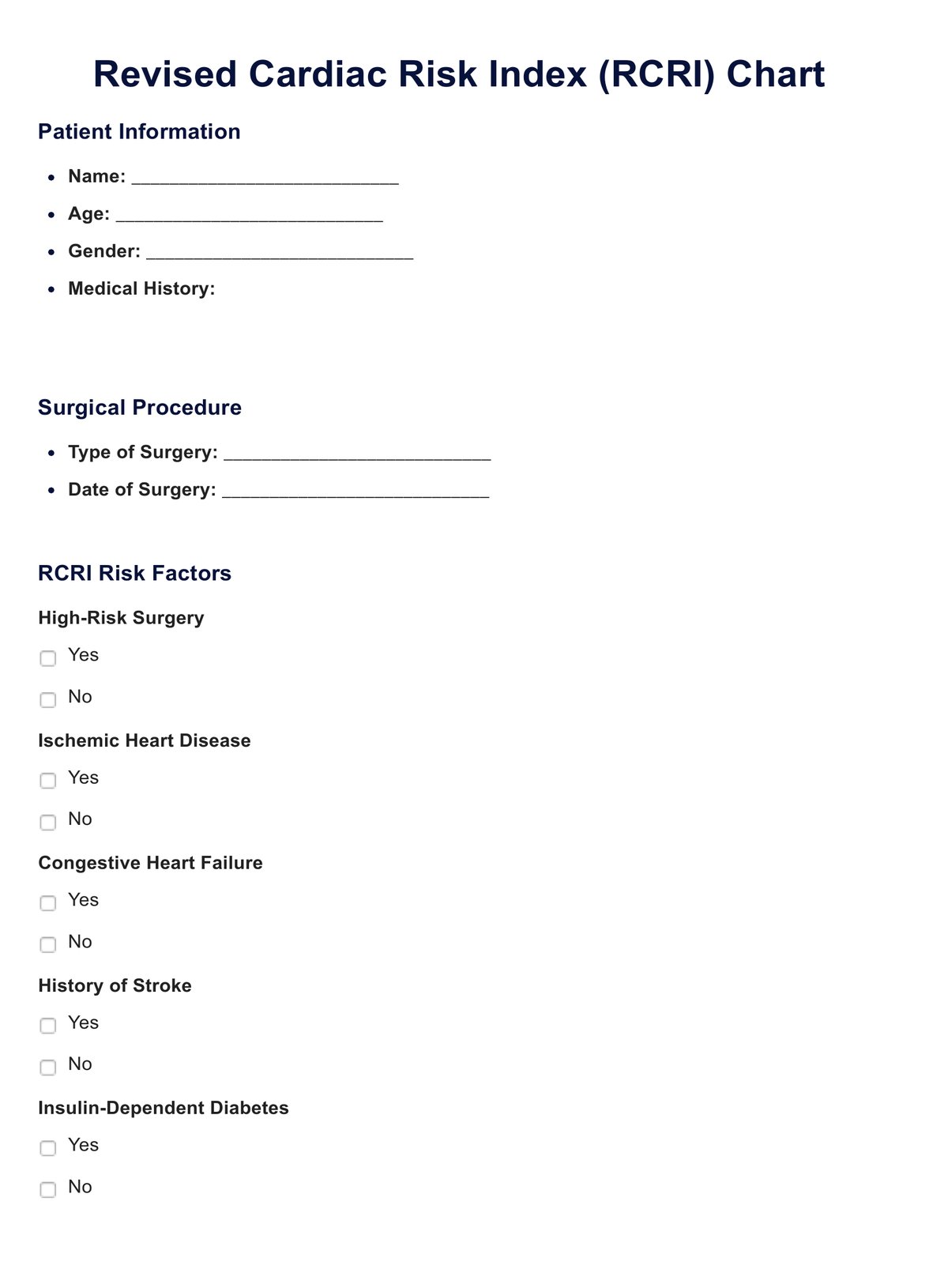Chlamydia
Get a confidential Chlamydia Test for early detection and peace of mind: fast results and discreet service. Take charge of sexual health today.


What is a Chlamydia Test?
A Chlamydia test is a diagnostic procedure used to detect the presence of Chlamydia trachomatis bacteria in the body. Chlamydia is a common sexually transmitted infection (STI) that can affect both men and women, often showing no symptoms in its early stages. Due to its asymptomatic nature, many individuals may unknowingly carry the infection, which, if left untreated, can lead to severe health complications and pose risks to sexual partners.
The test for Chlamydia typically involves collecting a sample, which can be a urine sample for men or a swab of the cervix for women. Depending on the situation, samples might also be collected from the urethra, throat, or rectum. These samples are then processed in a laboratory, where various testing methods, including nucleic acid amplification tests (NAATs), detect the genetic material of the Chlamydia bacteria.
Healthcare practitioners recommend Chlamydia testing for sexually active individuals, especially for those under the age of 25, as they are at a higher risk of contracting the infection. Testing is also advisable for pregnant women, as an untreated Chlamydia infection can lead to complications during pregnancy and childbirth.
Early detection through Chlamydia testing is crucial as it allows for timely treatment with antibiotics. This not only cures the infection but also helps prevent its spread and reduces the risk of complications such as pelvic inflammatory disease (PID), infertility, and other reproductive health issues.
Routine screenings, safe sexual practices, and open communication between patients and healthcare providers about sexual health are essential in the prevention and management of Chlamydia. Encouraging regular testing can aid in early identification and treatment, promoting overall well-being and a healthier community.
Chlamydia Template
Chlamydia Example
How does it work?
A printable Chlamydia test involves several essential steps to ensure proper sample collection, accurate testing, and result interpretation. Here is a breakdown of the process:
1. Acquiring the Form:
Healthcare practitioners can access the printable Chlamydia test form through their clinic's electronic medical records (EMR) system or download it from a reputable medical database. The form typically includes sections for patient information, test details, interpretation of results, recommendations, follow-up guidance, health promotion, and additional notes.
2. Patient Information:
The form begins by capturing patient details, including the individual's name, date of birth, and contact information, ensuring proper identification and communication for result delivery and follow-up.
3. Test Details:
The practitioner fills in the specifics of the test, noting the test date, the type of sample collected (such as cervical swabs, urine samples, or others), and the testing method used (e.g., Nucleic Acid Amplification Test - NAAT).
4. Sample Collection:
Once the form is prepared, the healthcare provider guides the patient in providing the necessary sample. The collection method varies based on the test, such as a cervical swab for women or a urine sample for men. Proper instructions for sample collection are essential for accuracy.
5. Testing Process:
The collected sample is then processed in a laboratory. Here, the Chlamydia test utilizes specific testing methods, like NAATs, to detect the presence of Chlamydia trachomatis DNA or RNA in the sample.
6. Interpretation of Results:
The healthcare professional reviews the test results and fills in the interpretation section. A negative result indicates the absence of the Chlamydia infection, while a positive result signals an active infection. Equivocal results may require retesting or further investigation.
7. Recommendations and Follow-up:
Based on the results, the practitioner offers appropriate recommendations, such as treatment if positive or further screening if necessary. Additionally, follow-up advice, health promotion strategies, and educational information are provided to the patient for preventive measures and ongoing healthcare.
By following these steps and accurately documenting the results on the printable Chlamydia test form, healthcare practitioners ensure a systematic approach to testing, result interpretation, and patient guidance, promoting proactive sexual health management and preventive care.
When would you use this test?
Healthcare practitioners employ the Chlamydia Test in various scenarios to diagnose Chlamydia trachomatis infections, especially in sexually active individuals. This test is recommended for specific situations to ensure timely detection and treatment of Chlamydia, a prevalent sexually transmitted infection (STI).
Routine Screenings
The Chlamydia Test is utilized during routine check-ups for sexually active individuals, particularly those under 25, as they are at higher risk of contracting the infection.
Symptomatic Individuals
In cases where patients exhibit symptoms associated with Chlamydia, such as abnormal genital discharge, pain during urination, or pelvic pain, healthcare providers employ the test to confirm the diagnosis.
Pregnant Women
Routine testing is essential for pregnant women to prevent maternal Chlamydia transmission to the baby during childbirth, which can cause severe complications if left untreated.
Partner Notification
In instances where an individual tests positive for Chlamydia, the test is used to screen and advise recent sexual partners for timely detection and treatment.
Follow-up Testing
After the completion of Chlamydia treatment, practitioners might recommend follow-up tests to ensure the infection has been successfully eradicated, preventing potential complications.
Utilizing the Chlamydia Test is crucial in these scenarios to promote early identification and treatment of Chlamydia infections, reducing the risk of complications such as pelvic inflammatory disease, infertility, and adverse pregnancy outcomes. By promptly diagnosing Chlamydia, healthcare professionals can provide appropriate treatment, prevent the spread of the infection, and offer guidance on safe sexual practices, thereby contributing to overall community health and well-being. Regular and timely use of the Chlamydia Test is instrumental in the management and prevention of Chlamydia infections, aligning with the broader goal of proactive sexual health management and disease prevention.
What do the results mean?
Results from a Chlamydia Test provide critical insights into an individual's sexual health status. The test outcomes typically fall into three categories—positive, negative, and equivocal—each carrying distinct implications for further actions and healthcare management.
Negative Result:
A negative result indicates the absence of Chlamydia trachomatis DNA or RNA in the sample. This means no active infection was detected at the time of testing. However, it is important to note that a negative result does not rule out the possibility of recent exposure. The absence of the infection at the time of the test indicates that, as of that moment, there was no Chlamydia present. Individuals with negative results are encouraged to maintain safe sexual practices, undergo regular screenings, and continue discussions with healthcare providers about their sexual health.
Positive Result:
A positive result indicates the presence of Chlamydia trachomatis DNA or RNA in the sample. It signifies an active Chlamydia infection that requires prompt treatment. Individuals who test positive are advised to commence a course of antibiotics as prescribed by their healthcare provider to eradicate the infection. Additionally, it is crucial to abstain from sexual activity until completing the treatment to prevent spreading the infection to others.
Equivocal Result:
An equivocal result suggests an inconclusive outcome that requires further investigation or retesting. This result might occur for various reasons, such as low bacteria levels in the sample or technical issues during testing. Healthcare practitioners may recommend a retest or an alternative testing method for a more conclusive outcome.
A free Chlamydia Test, like any Chlamydia diagnostic procedure, aims to clarify an individual's infection status, guiding appropriate treatment and preventive measures. Understanding the implications of these results empowers individuals to take proactive steps in managing their sexual health and seeking timely medical interventions for a healthier, safer future.
Research & Evidence
The use of Chlamydia tests has a well-documented history rooted in scientific research and evidence. Chlamydia trachomatis is a bacterium responsible for one of the most prevalent sexually transmitted infections (STIs) worldwide. The development and implementation of Chlamydia tests have evolved over the years, driven by rigorous scientific investigation.
The evolution of Chlamydia testing has been shaped by significant advancements in diagnostic methodologies, supported by a wealth of scientific research. The history of Chlamydia testing reveals a transition from traditional methods to more sophisticated and accurate diagnostic tools, notably driven by extensive research efforts.
In recent years, nucleic acid amplification tests (NAATs) have emerged as the gold standard for Chlamydia testing due to their superior sensitivity and specificity. Studies like the one by Gaydos and McKee (2018) have showcased the efficacy of NAATs for Chlamydia diagnosis in oropharyngeal and rectal samples. These tests demonstrated high sensitivity and specificity, essential for accurate detection.
Moreover, ongoing research continues to refine and expand testing techniques. Studies by Bachmann et al. (2020) and Manabe et al. (2021) explore innovative technologies, including point-of-care testing, leveraging molecular and antigen-based approaches. These advancements aim to enhance accessibility and promptness in Chlamydia testing, particularly in underserved populations or remote areas.
The historical transition from culture-based tests to more advanced molecular testing methods is evident. The establishment of NAATs as highly accurate and reliable tools in Chlamydia diagnosis is supported by multiple studies, including those conducted by Gaydos et al. (2018) and others.
This body of evidence from reputable researchers and institutions showcases the transformation of Chlamydia testing, affirming the efficacy of modern diagnostic techniques in offering accurate and timely results. The research from this period underscores the evolution towards more sensitive, specific, and accessible testing methods, enhancing the precision of Chlamydia diagnosis and guiding effective treatment strategies.
Evidence supporting the use of Chlamydia tests is extensive. Studies have consistently demonstrated the effectiveness of NAATs in diagnosing Chlamydia infections with high sensitivity and specificity. For example, a study by Gaydos et al. (2018) found that NAATs had a sensitivity of 94.3% and a specificity of 99.0% for detecting Chlamydia infections. These results underscore the reliability of modern Chlamydia tests.
Furthermore, Chlamydia testing has been essential in epidemiological studies and public health initiatives to understand the prevalence and distribution of Chlamydia infections in different populations. This evidence has informed guidelines and recommendations for routine Chlamydia screening and the importance of early detection and treatment to prevent complications.
References
Bachmann, L. H., Manabe, Y. C., & Gaydos, C. A. (2020). New technologies for the detection of sexually transmitted infections. Current Infectious Disease Reports, 22(4), 12.
Gaydos, C. A., & McKee, S. (2018). Nucleic acid amplification tests for the diagnosis of Chlamydia trachomatis and Neisseria gonorrhoeae in the oropharynx and rectum. Journal of Molecular Diagnostics, 20(6), 771-782. doi:10.1016/j.jmoldx.2018.07.002
Manabe, Y. C., & Bachmann, L. H. (2021). Advances in sexually transmitted infection diagnostics: point-of-care and rapid test technologies. Expert Review of Anti-Infective Therapy, 19(5), 515-526. doi:10.1080/14787210.2021.1870517
Commonly asked questions
Anyone who is sexually active or engages in unprotected sex should consider Chlamydia testing, especially individuals under 25, pregnant women, and those with multiple sexual partners.
Chlamydia often shows no symptoms in the early stages. However, when symptoms occur, they might include abnormal genital discharge, pain during urination, and pelvic pain. Many individuals may not realize they are infected and can unknowingly spread the disease.
The test can involve a urine sample for men or a cervix swab for women. Other sites, like the urethra, throat, or rectum, might also be sampled based on the situation. These samples are processed in a laboratory using various testing methods.
















































































































